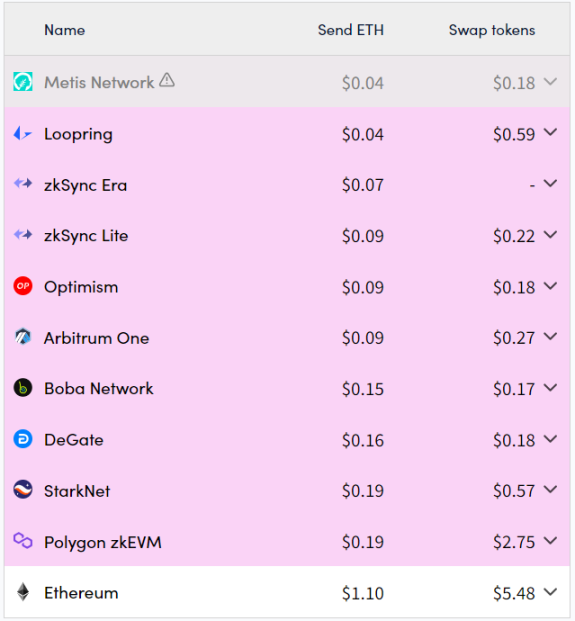Cryptocurrencies have entered the "adolescent" stage, but the development in terms of usability is still relatively slow, largely due to the high transaction fees and clumsy user interfaces in the past.
By Ebunker

Cryptocurrencies Enter the "Adolescent" Stage
Recently, Ethereum co-founder Vitalik Buterin delivered a speech at the TOKEN2049 conference, discussing topics such as the usability of cryptocurrencies, the use of cryptocurrencies as a means of payment, and the security of the entire ecosystem. He believes that cryptocurrencies are no longer in the initial development stage, but their usability is still in the early stage and actual usability is increasing. Cryptocurrencies have entered the "adolescent" stage, but the development in terms of usability is still relatively slow, largely due to the high transaction fees and clumsy user interfaces in the past.
Success of Ethereum L2 and Its Low Fees
Vitalik stated that during previous network congestion peaks, Ethereum gas fees soared to over $200. In the past, he was forced to pay over $800 in fees for a single transaction to protect the privacy of the transaction, but this situation no longer exists, thanks to the development of Ethereum L2. L2 transfers some transactions from the main network to the second-layer blockchain, which is crucial for reducing the cost of the Ethereum main network and improving its scalability.

Recently, there have been voices in the industry questioning whether the development of Ethereum L2 has weakened Ethereum L1. However, according to Vitalik, the low transaction fees of L2 are an important milestone for the entire Ethereum ecosystem, as it addresses the main challenges faced by mainstream adoption. Currently, ecosystems such as Optimism and Arbitrum have flourished because they have successfully reduced fees to below $0.1. Furthermore, rollups have also achieved this milestone, making transactions more secure and affordable for users.
Meeting Mainstream Needs While Maintaining Decentralization
In addition to transaction costs, Vitalik also discussed the success of Ethereum in terms of transaction "time". After the Ethereum merge and transition to PoS (proof of stake), the average waiting time for the next block has been successfully reduced by half, reducing the transaction waiting time to 5 to 15 seconds, and the transaction time on the Ethereum L2 network has been reduced to about 1 second.
Vitalik also mentioned another common challenge in the cryptocurrency industry: meeting the needs while maintaining decentralization.
It is worth noting that Vitalik recently posted an article on X, hoping for a more decentralized Ethereum L2. He believes that in practice, L2 should inherit the security of L1 on which they are based. The current issue is that, although Ethereum L1 is decentralized, L2 based on Ethereum is not necessarily decentralized. In fact, it is difficult for L2 to achieve the same level of decentralization as L1. For example, Coinbase's Base chain presents itself as Ethereum's L2.
Vitalik stated that starting from 2025, he will only publicly acknowledge L2 that has achieved Stage 1 or higher in decentralization work. L2 networks at this stage require 75% consensus of the council to overturn the proof system, and at least 26% of the council members must be independent of the rollup team. He believes "this requirement is reasonable and necessary for the security of the network. Moreover, other L2s focusing on zero-knowledge technology are also approaching Stage 1."
Ethereum's "User Experience Revolution" and Development Direction
Vitalik also emphasized the progress of account abstraction technology and the "user experience revolution". Currently, there are still reasons for mainstream society not to use crypto assets, such as "inefficiency of cryptocurrencies", but this is not due to technological limitations. Blockchain has empowered the internet, acting as "digital concrete" (creating a durable and resistant digital structure, similar to creating a solid physical structure with concrete).
In fact, users can now create a simple real account (smart contract wallet), and transactions can only be sent from it when the user generates proof that they control a specific email address. Therefore, the restorative function of Web2 can now be introduced into the Web3 world.
Vitalik also mentioned the need to improve the security of wallets, especially to protect them from the intrusion of centralized participants. He commented on extreme self-sovereign wallets (mnemonic cold wallets) or traditional choices that rely on trusted third parties (CEX), believing that both options have inherent flaws.
In contrast, he believes that multi-signature smart wallets are a more balanced solution. By requiring multiple private keys to authorize transactions, multi-signature wallets can provide enhanced protection for user funds while maintaining a high level of privacy. (Note: Multi-signature security means that users have multiple keys, for example, having 6 keys and requiring 4 for transactions. Custom rules can even be set, requiring only 1 key for small transactions).
In addition, Vitalik also discussed the technical improvements being made on the Ethereum main network, such as enhanced decentralization, reduced confirmation times, and improved scalability, which will play a key role in the future success of Ethereum.
According to his predictions, the future Ethereum ecosystem will develop towards social networks, payment systems, private mining pools, zero-knowledge, and human proof technologies, while maintaining decentralization and practicality.
Let's wait and see as this "adolescent" protocol gradually matures.
免责声明:本文章仅代表作者个人观点,不代表本平台的立场和观点。本文章仅供信息分享,不构成对任何人的任何投资建议。用户与作者之间的任何争议,与本平台无关。如网页中刊载的文章或图片涉及侵权,请提供相关的权利证明和身份证明发送邮件到support@aicoin.com,本平台相关工作人员将会进行核查。




